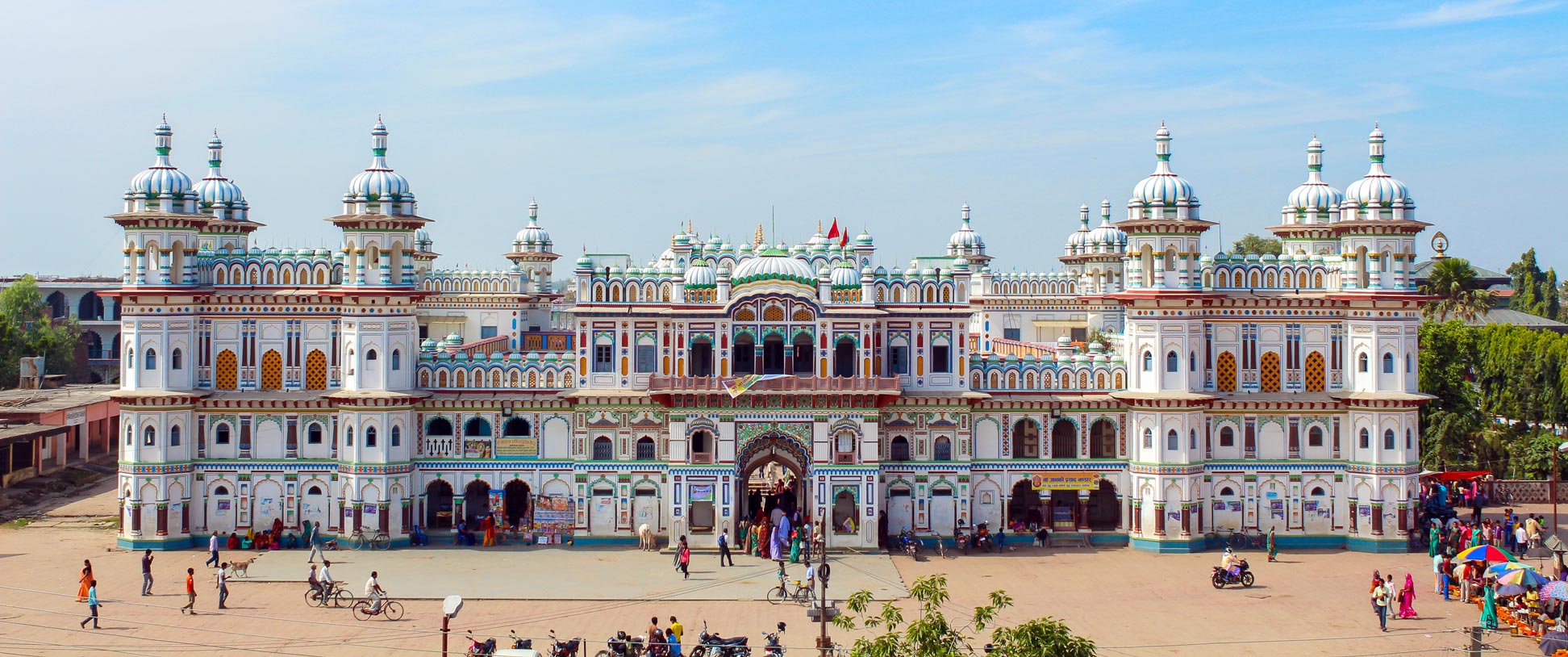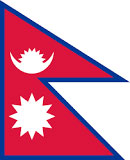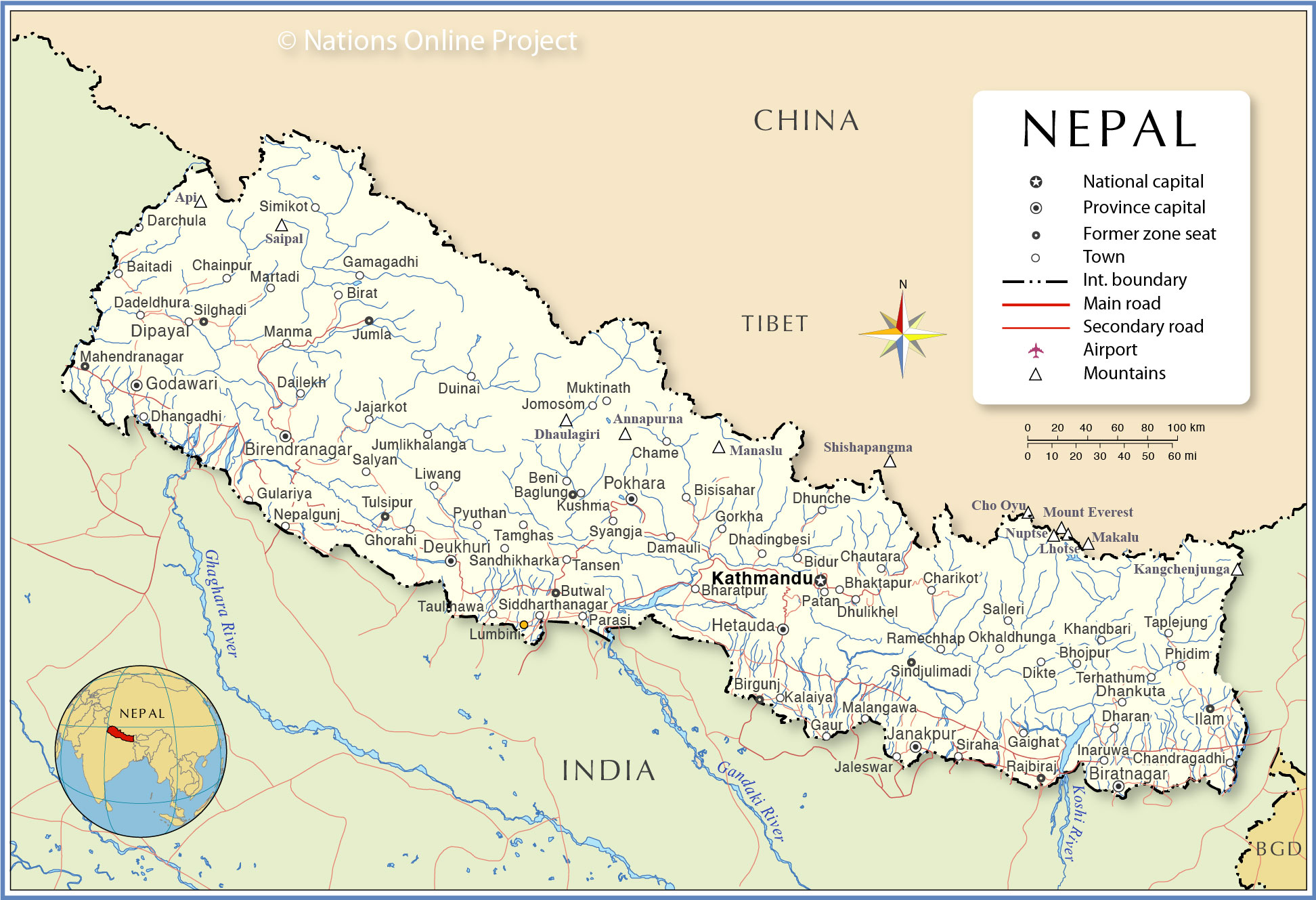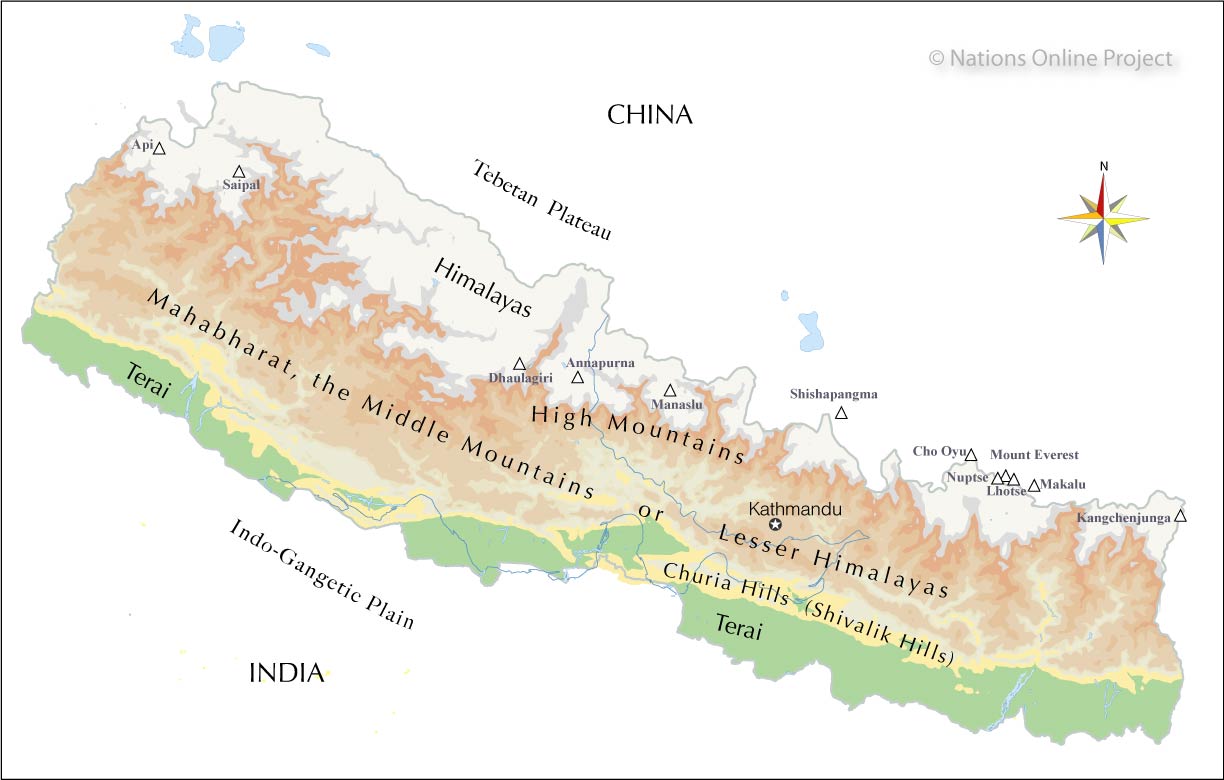Map shows the location of following Nepalese cities and towns:
Baglung, Baitadi, Beni, Bhaktapur, Bharatpur, Bhojpur, Bidur,
Biratnagar,
Birendranagar, Birgunj, Bisisahar, Butwal, Chainpur, Chame, Chandragadhi (Bhadrapur), Charikot, Chautara, Dadeldhura, Dailekh, Damauli, Darchula, Dhadingbesi, Dhangadhi,
Dhankuta, Dharan, Dhulikhel, Dhunche, Dikte,
Dipayal, Duinai, Gaighat, Gamagadhi, Gaur, Ghorahi (largest sub-metropolitan city of Nepal),
Godawari, Gorkha, Gulariya,
Hetauda, Ilam, Inaruwa, Jajarkot, Jaleswor,
Janakpur,
Jomosom (Jomsom; Dzongsam), Jumla, Jumlikhalanga, Kalaiya,
Kathmandu, Khandbari, Kusma, Liwang, Lumbini, Mahendranagar, Malangawa, Manma, Martadi, Nepalgunj, Okhaldhunga, Parasi,
Patan (officially Lalitpur Sub-Metropolitan City, a UNESCO World Heritage Site), Phidim,
Pokhara (Nepal's second largest city; pop. 250,000), Pyuthan, Rajbiraj, Ramechhap, Salleri, Salyan, Sandhikharka,
Siddharthanagar (Bhairahawa), Silghadi, Simikot, Sindjulimadi, Siraha, Syangja, Tamghas, Tansen, Taplejung, Taulihawa, Terhathum, and Tulsipur.
The map shows the location of some of the world's highest mountains:
Annapurna, 8,091 m (26,545 ft) ranked 10th; Api, 7,132 m; (23,399 ft); Cho Oyu, 8,201 m (26,906 ft)
ranked 6th; Dhaulagiri, 8,167 m (26,795 ft) ranked 7th; Kangchenjunga, 8,586 m (28,169 ft) ranked 3rd; Lhotse, 8,516 m (27,940 ft); ranked 4th), Makalu, 8,463 m (27,766 ft) ranked 5th; Manaslu, 8,156 m (26,759 ft) ranked 8th;
Everest, 8,848 m (29,029 ft) ranked 1st; Nuptse, 7,861 m (25,791 ft); Saipal, 7,619 m (24,997 ft), and Shishapangma (officially: Xixiabangma, 8,013 m (26,289 ft) ranked 14th.




